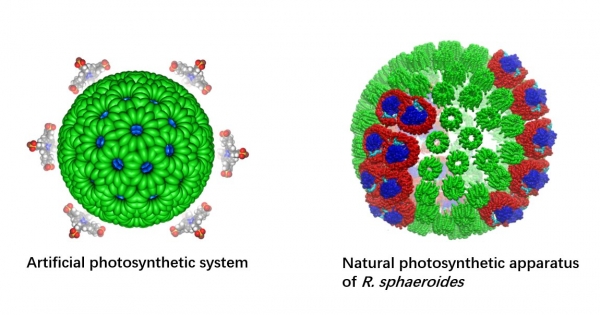A joint research team from City University of Hong Kong (CityU) and collaborators recently developed a stable artificial photocatalytic system that is more efficient than natural photosynthesis. The new system mimics a natural chloroplast to convert carbon dioxide in water into methane, a valuable fuel, very efficiently using light. This is a promising discovery, which could contribute to the goal of carbon neutrality.
Photosynthesis is the process by which chloroplasts in plants and some organisms use sunlight, water and carbon dioxide to create food or energy. In past decades, many scientists have tried to develop artificial photosynthesis processes to turn carbon dioxide into carbon-neutral fuel.
“However, it is difficult to convert carbon dioxide in water because many photosensitizers or catalysts degrade in water,” explained Professor Ye Ruquan, Associate Professor in the Department of Chemistry at CityU, one of the leaders of the joint study. “Although artificial photocatalytic cycles have been shown to operate with higher intrinsic efficiency, the low selectivity and stability in water for carbon dioxide reduction have hampered their practical applications.”
Read more at City University of Hong Kong
Image: A hierarchical self-assembly photocatalytic system (left) mimics the natural photosynthesis apparatus of a purple bacteria, called Rhodobacter sphaeroides (right), achieving 15% solar-to-fuel efficiency when converting carbon dioxide into methane. (Photo credit: (left) Professor Ye Ruquan’s research group / City University of Hong Kong and (right) Biophysical Journal, 99:67-75, 2010.)


